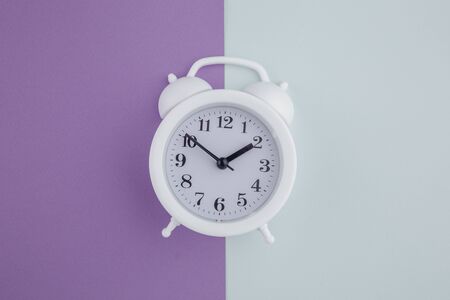1. Understanding Feng Shui Basics
Feng Shui, pronounced “fung shway,” is an ancient Chinese practice that focuses on harmonizing individuals with their surrounding environment. The core idea behind Feng Shui is to create spaces where energy—known as “chi”—can flow freely, bringing balance, peace, and positive vibes to your life. In today’s fast-paced American lifestyle, prioritizing wellness and comfort at home is more important than ever, especially when it comes to getting a restful night’s sleep.
What Is Feng Shui?
Feng Shui literally means “wind” and “water.” It’s all about arranging your living space in a way that encourages relaxation and supports your well-being. Think of it as interior design with a focus on natural flow and energy. By understanding the basics, you can transform your bedroom into a true sanctuary for rest.
Why Use Feng Shui for Sleep?
Americans value comfort, personal wellness, and creating safe havens at home. Feng Shui aligns perfectly with these values by offering practical ways to make your bedroom more peaceful and inviting. When your bedroom feels calm and balanced, it’s much easier to unwind after a long day and enjoy deeper, more restorative sleep.
Key Feng Shui Principles That Support Better Sleep
| Principle | Description | How It Supports Sleep |
|---|---|---|
| Clutter-Free Space | Keep the bedroom tidy and organized | Reduces stress and mental clutter so you can relax |
| Balanced Layout | Arrange furniture for good energy flow (chi) | Makes the room feel open and harmonious |
| Natural Elements | Add soft fabrics, plants, or calming art | Brings a touch of nature indoors for tranquility |
| Soothing Colors | Use gentle shades like blues or earth tones | Creates a calm visual environment for rest |
| No Electronics Near Bed | Avoid screens right by the bed | Cuts down on distractions and supports better sleep habits |
The Purpose of Feng Shui in Your Bedroom
The main goal of using Feng Shui in your bedroom is to craft a space that feels comfortable, safe, and restful. By applying its simple principles, you can set up your room so that it naturally supports healthy sleep patterns—something every American family values. You don’t need to follow every rule perfectly; even small changes can make a big difference in how your bedroom feels at night.
2. Optimizing Bedroom Layout
Best Bed Placement for Feng Shui
When it comes to Feng Shui, the way you position your bed can make a huge difference in how well you sleep. In American homes, bedrooms come in all shapes and sizes—ranging from compact city apartments to spacious suburban master suites. No matter your room size, there are simple guidelines you can follow:
The Command Position
The “command position” is a key Feng Shui concept. It means placing your bed so you can see the bedroom door while lying down, but not be directly in line with it. This helps you feel safe and relaxed.
| Room Shape | Bed Placement Tip |
|---|---|
| Rectangular (most common in U.S.) | Place the headboard against the longest solid wall, ideally diagonal from the door but not directly facing it. |
| Square | Center the bed on a solid wall, giving space on both sides for nightstands. |
| Small rooms or apartments | If space is tight, avoid having your feet point straight out the door (“coffin position”). Use a small bench or soft rug at the foot of the bed if you cant move it. |
Room Flow and Furniture Arrangement
A clutter-free flow is essential for good energy (or “chi”) in your bedroom. Here are some easy tips that fit American furniture styles and bedroom layouts:
- Keep pathways clear: Make sure there’s enough space to walk around the bed without bumping into dressers or nightstands.
- Nightstands on both sides: This creates balance and symmetry, which helps promote harmony—plus it’s practical!
- Avoid mirrors facing the bed: In Feng Shui, mirrors reflecting the bed can disturb sleep. If you have mirrored closet doors (common in U.S. homes), try hanging a light curtain over them at night.
- No heavy shelves above the bed: Shelves or artwork directly over your head can create a feeling of pressure as you sleep.
Quick Reference Table: Feng Shui Tips for Common U.S. Bedrooms
| Bedroom Size/Style | Feng Shui Suggestion |
|---|---|
| Master Bedroom | Add two identical lamps and nightstands for balance; use a sturdy headboard for support. |
| Guest Room | Use calming colors and keep décor minimal to invite restful sleep. |
| Twin/Kids’ Room | Avoid bunk beds if possible; ensure each child has their own bedside table or shelf for personal space. |
| Studio Apartment | If your bed faces the entryway, use a folding screen or tall plant to create separation. |
By making these simple changes, you’ll help create a peaceful bedroom that encourages deep rest—right here in your American home!

3. Color Choices for Serenity
Choosing the right colors for your bedroom is a key element in Feng Shui, especially when your goal is to create a calm and restful space for better sleep. In the U.S., popular décor trends like neutral tones, soft pastels, and minimalism align perfectly with Feng Shui’s recommendations for sleep-enhancing palettes.
How Colors Impact Sleep
Feng Shui teaches that color can influence our emotions, energy levels, and even the quality of our rest. For bedrooms, it’s best to avoid overly bright or stimulating shades and instead focus on hues that evoke peace and relaxation.
Recommended Color Palettes
| Color Family | Examples | Feng Shui Benefits | On-Trend Styles in America |
|---|---|---|---|
| Neutrals | Beige, taupe, ivory, soft gray | Grounding, calming, versatile foundation | Minimalist & Modern Farmhouse |
| Soft Pastels | Pale blue, lavender, blush pink, sage green | Gentle energy, promotes relaxation and serenity | Cottagecore & Scandinavian-inspired Décor |
| Earth Tones | Muted greens, terracotta, sand, warm browns | Connects with nature, creates warmth and security | Boho & Nature-Inspired Spaces |
| Avoid These Colors | Bright red, neon yellow, bold black accents | Can be too energizing or overwhelming for sleep spaces | – |
Tips for Using Color in Your Bedroom
- Walls: Choose a soft neutral or pastel shade as your main wall color to set a soothing tone.
- Bedding: Layer in complementary hues with linens and pillows—think soft blues or gentle greens for extra tranquility.
- Accents: Use earth-toned accessories like rugs or curtains to add warmth without overpowering the room.
- Simplicity: Stick to two or three main colors for a cohesive look; this aligns with both Feng Shui principles and modern minimalist trends.
- Avoid: Large blocks of bright or high-contrast colors which might disrupt your rest.
By thoughtfully selecting your bedroom’s color palette with these Feng Shui guidelines in mind—and connecting with American décor styles—you’ll create a peaceful retreat that supports deep and restful sleep.
4. Declutter and Personalize Mindfully
One of the key principles of Feng Shui for better sleep is creating a calm and orderly environment in your bedroom. In the U.S., there’s a growing trend toward minimalist living—think “less is more.” By clearing out clutter and organizing your space, you make room for restful energy and peaceful nights.
Why Decluttering Matters
Clutter can lead to stress, distraction, and even insomnia. In Feng Shui, it’s believed that too much stuff blocks the flow of positive energy (chi) in your room. The American minimalist movement also encourages us to keep only what we love or truly need. Together, these ideas help create a bedroom that feels open, clean, and soothing.
Practical Ideas for Decluttering and Organizing
| Decluttering Tip | How to Apply It |
|---|---|
| Start Small | Tackle one area at a time, like your nightstand or dresser. Don’t try to do everything in a day. |
| Keep Only Essentials | If you haven’t used something in six months, consider donating or storing it elsewhere. |
| Use Storage Solutions | Baskets, bins, or under-bed organizers are great for keeping things tidy but out of sight. |
| Clear the Floor | A clear pathway from the door to your bed helps chi flow smoothly and makes the room feel larger. |
| Limit Wall Decor | Select just a few pieces of art or photos that make you feel calm and happy. |
Add Personal Touches—The Mindful Way
Your bedroom should reflect who you are while still feeling peaceful. Here’s how Americans balance personalization with relaxation:
- Pillows & Throws: Choose soft textures in calming colors like blue, green, or beige.
- Meaningful Objects: Display just one or two sentimental items on a shelf or bedside table—maybe a family photo or a favorite book.
- Scent: Use an essential oil diffuser with lavender or chamomile for a relaxing vibe.
- Plants: Small indoor plants like snake plants or peace lilies purify the air and bring life to the room without overwhelming it.
Quick Guide: Balancing Minimalism & Personality
| Minimalist Tip | Personalization Tip |
|---|---|
| Keep surfaces clear except for essentials (lamp, clock) | Add a framed photo of loved ones or artwork that inspires calmness |
| Avoid overcrowding furniture—less is more! | Select bedding in your favorite color palette for comfort and style |
| Edit regularly—remove anything that no longer serves you | Rotate seasonal décor like cozy blankets or light summer sheets for variety without clutter |
The Goal: Calm & Comfort Combined
Your bedroom should be your sanctuary. By thoughtfully decluttering and adding just enough personal touches, you’ll create a space that welcomes both rest and happiness every night.
5. Incorporating Natural Elements
Bringing Nature Indoors for Restful Sleep
Adding natural elements to your bedroom is a key Feng Shui practice that also aligns with the American passion for biophilic design and sustainable living. By blending these ideas, you can create a calming and healthy sleep environment that feels both peaceful and energizing.
Tips for Using Plants in Your Bedroom
- Choose Air-Purifying Plants: Select easy-care options like snake plants, peace lilies, or pothos. These not only enhance air quality but add a touch of green serenity.
- Place Plants Thoughtfully: Avoid placing large plants directly next to your bed. Instead, position them in corners or on window sills to encourage gentle energy flow.
- Avoid Sharp Leaves: In Feng Shui, plants with soft, rounded leaves are preferred as they promote gentle energy (chi).
Popular Bedroom Plants and Their Benefits
| Plant Name | Feng Shui Benefit | American Appeal |
|---|---|---|
| Snake Plant | Cleanses air; promotes restful sleep | Low-maintenance; stylish look |
| Aloe Vera | Heals and soothes; protects from bad vibes | Sustainable; useful for skincare |
| Peace Lily | Purifies air; symbolizes tranquility | Lush foliage; easy care |
Maximizing Natural Light
- Let the Sun Shine In: Open curtains or blinds during the day to allow sunlight to refresh your space. Natural light helps regulate your body’s sleep-wake cycle.
- Add Sheer Drapes: Use sheer curtains to soften bright sunlight while still welcoming positive chi into your room.
Selecting Sustainable, Natural Materials
- Bedding: Choose organic cotton, bamboo, or linen sheets for breathability and comfort.
- Furniture: Opt for wood pieces from responsibly sourced materials—think reclaimed or certified sustainable wood—for a cozy and eco-friendly vibe.
Quick Guide: Natural Materials for Better Sleep
| Material | Feng Shui Quality | Sustainable Living Benefit |
|---|---|---|
| Cotton Sheets | Smooth energy flow; comfort | Biodegradable; renewable resource |
| Bamboo Blinds | Naturally calming energy | Fast-growing and sustainable material |
By combining Feng Shui wisdom with America’s love of nature and sustainability, you can transform your bedroom into a restful retreat that supports better sleep every night.


